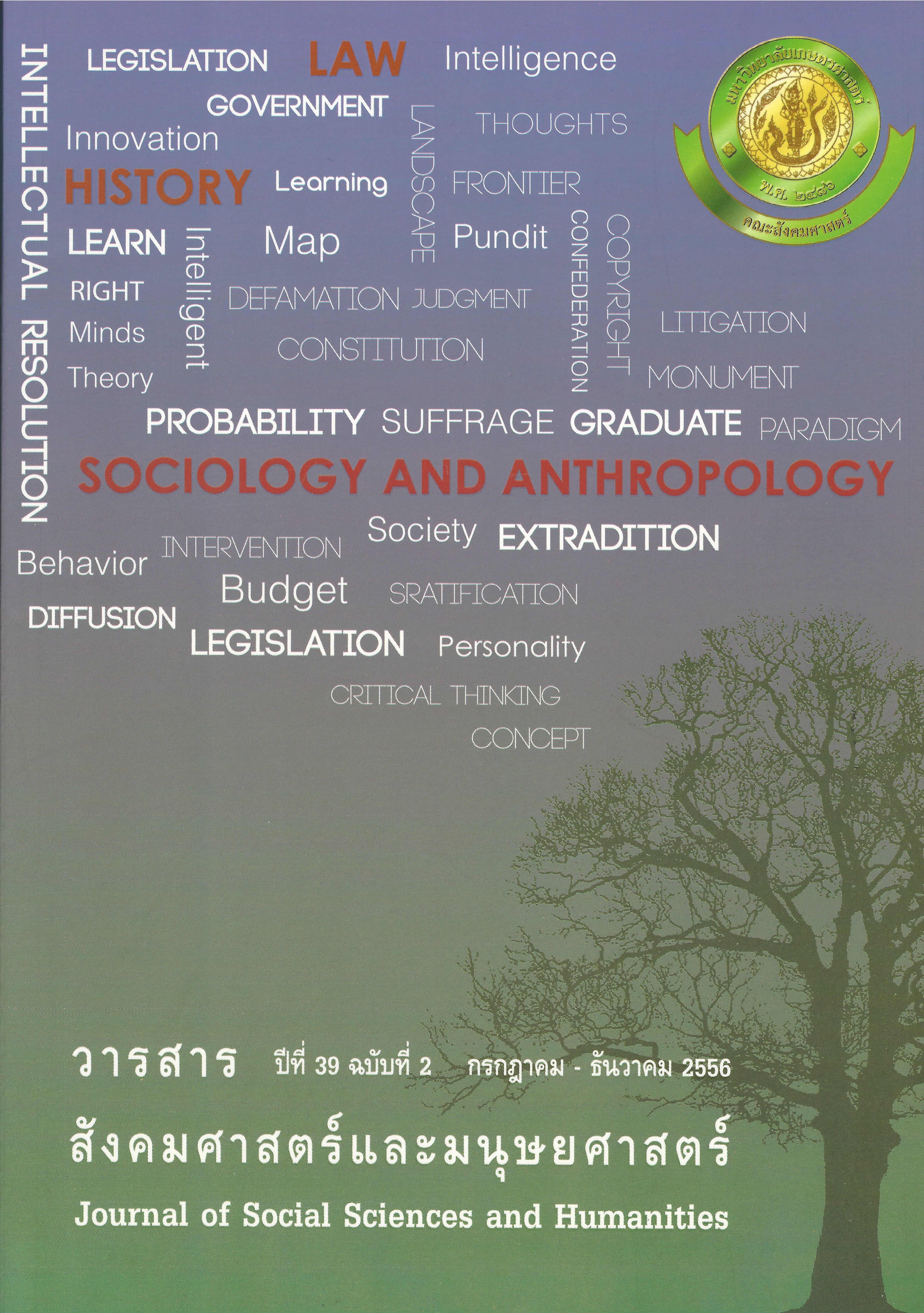การประยุกต์ถ่านชีวภาพในการปรับปรุงดินเพื่อการเกษตร
Main Article Content
บทคัดย่อ
งานวิจัยนี้มีวัตถุประสงค์เพื่อประเมินการประยุกต์ถ่านชีวภาพเพื่อการปรับปรุงดินและประเมินระดับความพึงพอใจของเกษตรกรและเจ้าหน้าที่เทศบาลต่อการมีส่วนร่วมในกิจกรรมการทดลองและการสัมมนาเรื่องการใช้ถ่านชีวภาพร่วมกับปุ๋ยคอกเพื่อการปรับปรุงดิน นอกจากนี้ยังประเมินระดับการยอมรับการประยุกต์ถ่านชีวภาพเพื่อการปรับปรุงดินและหาความสัมพันธ์ระหว่างประสบการณ์เดิมที่เกี่ยวข้องกับการปรับปรุงดินกับระดับการยอมรับของผู้ได้เข้าร่วมกิจกรรม การวิจัยใช้วิธีการทดลองแบบมีส่วนร่วมของเกษตรกรในการปลูกผักคะน้าโดยใช้ปุ๋ยคอกร่วมกับถ่านชีวภาพในอัตราส่วนที่แตกต่างกันดังนี้คือ 0:0 100:0 75:25 50:50 25:75 และ 0:100 ทั้งในแปลงสาธิตและแปลงฝึกอบรม ผลผลิตของผักคะน้าซึ่งวัดด้วยความสูงและน้ำหนักเป็นตัวชี้วัดว่าอัตราส่วนใดให้ผลผลิตสูงสุด มีการตรวจสอบสมบัติของถ่านชีวภาพและของดินในห้องปฏิบัติการก่อนและหลังการทดลองในภาคสนาม การรวบรวมข้อมูลความพึงพอใจและการยอมรับของผู้เข้าร่วมกิจกรรมใช้แบบสอบถาม เทคนิคในการวิเคราะห์ทางสถิติ คือ สถิติเชิงพรรณนา การจัดกลุ่มแบบสองขั้นและการทดสอบไคกำลังสอง ผลการวิจัยพบว่าผักคะน้าในแปลงทดลองที่ใช้อัตราส่วนของปุ๋ยคอกต่อถ่านชีวภาพ 25:75 มีความสูงและน้ำหนักเฉลี่ยมากกว่าทุกแปลง โดยเฉพาะน้ำหนักเฉลี่ยมีความแตกต่างจากทุกแปลงอย่างมีนัยสำคัญทางสถิติที่ระดับ 0.05 การประเมินระดับความพึงพอใจของเกษตรกรและเจ้าหน้าที่เทศบาลต่อการเข้าร่วมกิจกรรมพบว่าอยู่ในระดับพึงพอใจมาก การติดตามผู้ได้เข้าร่วมกิจกรรมหลังจากเสร็จสิ้นกิจกรรมแล้ว 1 เดือน พบว่าผู้ได้เข้าร่วมกิจกรรมร้อยละ 57 มีการยอมรับในระดับปฏิบัติจริงด้วยความเชื่อมั่น และพบว่าความรู้เดิมของผู้เข้าร่วมกิจกรรมในเรื่องที่เกี่ยวข้องกับการปรับปรุงดินไม่มีผลต่อระดับการยอมรับการประยุกต์ถ่านชีวภาพเพื่อการปรับปรุงดิน สำหรับผู้ที่ยังไม่นำไปปฏิบัติจริงพบว่ามีสาเหตุมาจากการขาดอุปกรณ์ในการผลิตถ่านชีวภาพ
Biochar application to soil improvement for agriculture
This research aimed to assess an application of biochar to soil improvement and to assess the satisfaction level of farmers and municipal authorities for their participations in the experiments and in the seminar of using biochar mixed with organic composts as soil improver. Moreover, it also assessed the adoption level of participants on biochar application to soil and to establish the relationship between the participants’ previous experiences relating to soil improvement and the adoption level. The approach used in this research was participatory experiments with farmers in planting the Chinese kales using different ratio of organic composts to biochar as follows: 0:0, 100:0, 75:25, 50:50, 25:75, and 0:100 in the demonstration and training farms. The plant yields measured by the average of the Chinese kales’ height and weight were indicators for evaluating which ratio was the most effective. The properties of biochar and soils were examined in the laboratory before and after the field experiments. Questionnaires were used for collecting the data of satisfaction and adoption of the participants after joining the activities. Techniques for statistical analyses were descriptive, two-step cluster and Chi-square. It was found that the average height and weight of the Chinese kales in the 25:75 plot were greater than those in other plots. However, only the average weight of the Chinese kales in this plot was different from the others at the 0.05 statistical significance level. The participants were found to be very satisfied in the activities’ participations. The monitoring after the activities about one month showed that 57% of the participants adopted biochar application to soil at the practice level while there was no relationship between the participants’ previous experiences relating to soil improvement and the adoption level. For those who had not yet adopted in practice was because they lacked stoves for biochar production.


